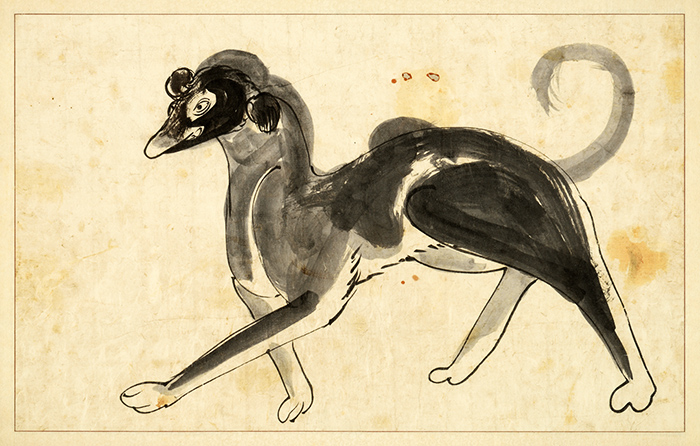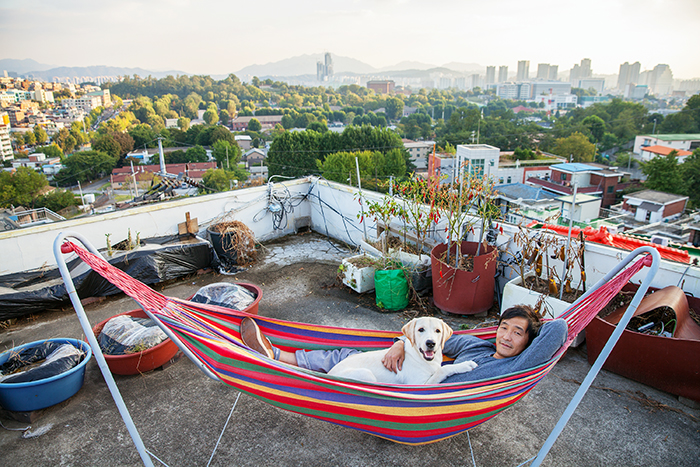
The painting above, titled ‘A Dog’ (견도, 犬圖), is believed to be of the pet dog owned by the Crown Prince Sado (사도세자, 思悼世子) (1735-1762).
By Xu Aiying and Kim Young Shin
Photos = National Folk Museum of Korea
The year of the dog has come.
Among the 12 zodiac animal signs, the dog is the 11th guardian that draws away evil. As a lucky omen, it appears in many sehwa New Year’s drawings (세화, 歲畫) and in bujeok good luck charms (부적) to draw away evil spirits, bless the coming days and prevent disaster.
The National Folk Museum of Korea is hosting a special exhibition titled “Dogs in Our Lives: Companionship and Friendship” to celebrate the year of the dog. The exhibition concentrates on canines being long-time human companions, and on the meaning of dogs throughout Korean history and heritage.
The exhibition is designed to show different perceptions of the animal across Korean society. The first part views dogs as guardians, the second as pets, and lastly as partners.

‘Gilsu and Cheolsu, Yongsna-dong, Seoul” (길수와 철수, 해방촌), by artist Yoon JeongMee, is one of the items on display in the special exhibition 'Dogs in Our Lives' at the National Folk Museum of Korea.
Some 70 items are on display at the exhibition, ranging from relics from ancient Silla (57 B.C.–A.D. 935) and folk paintings through to modern artworks, such as videos of interviews. Some of the interviews show the diversified roles that canines play in modern society, such as guide dogs, military dogs and rescue dogs.
The special exhibition is open to the public free-of-charge and runs until Feb. 25.
xuaiy@korea.kr